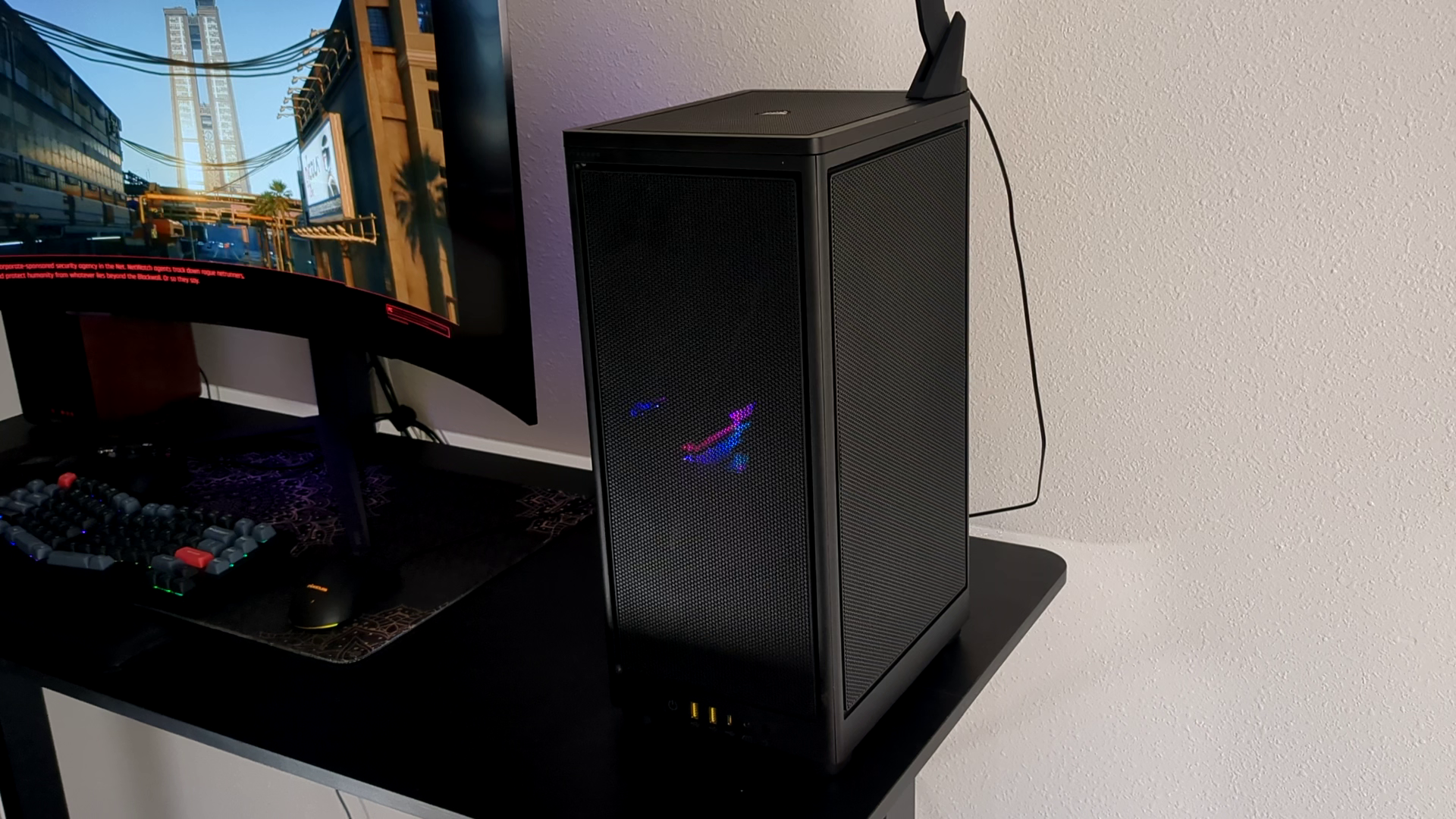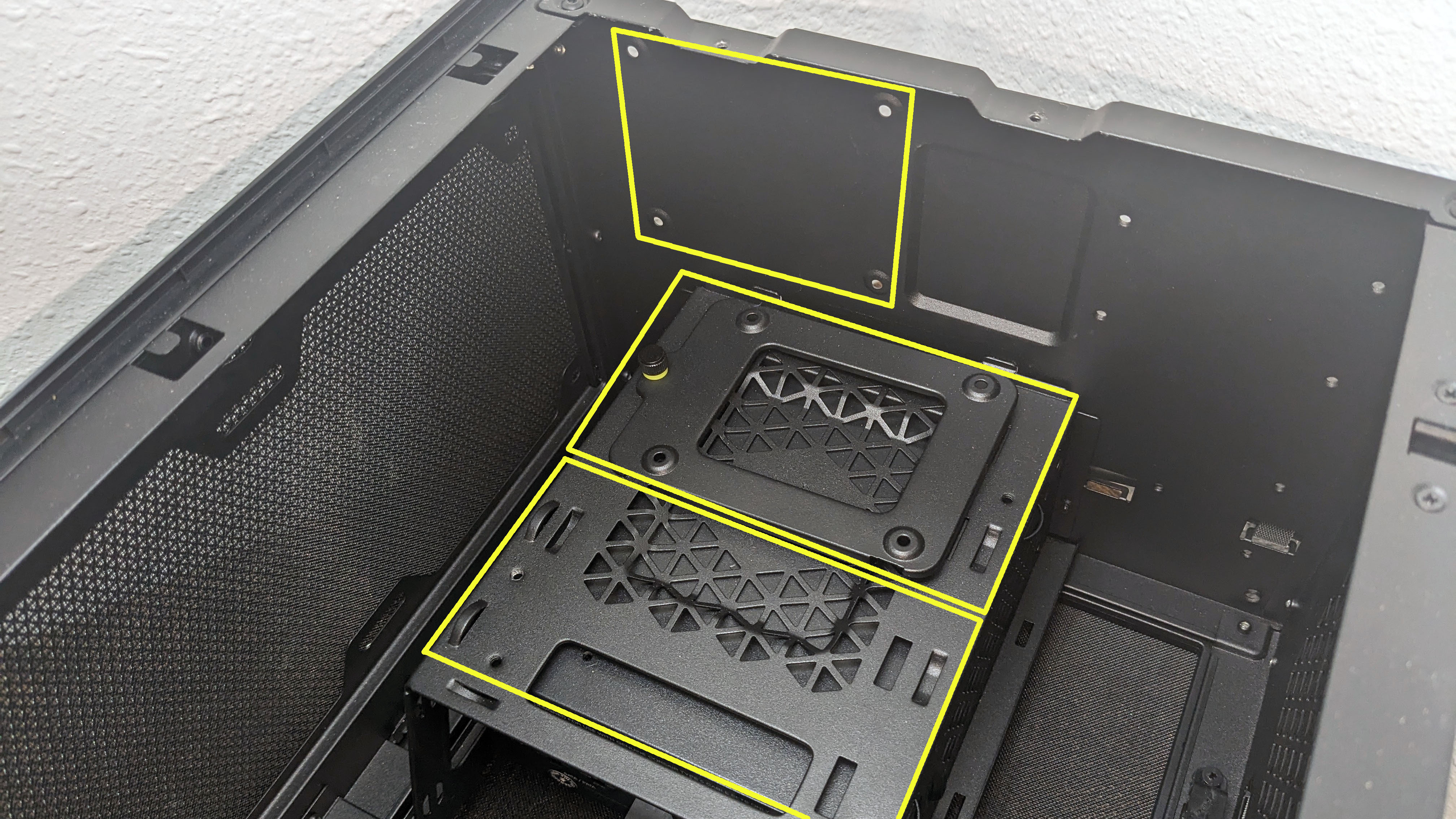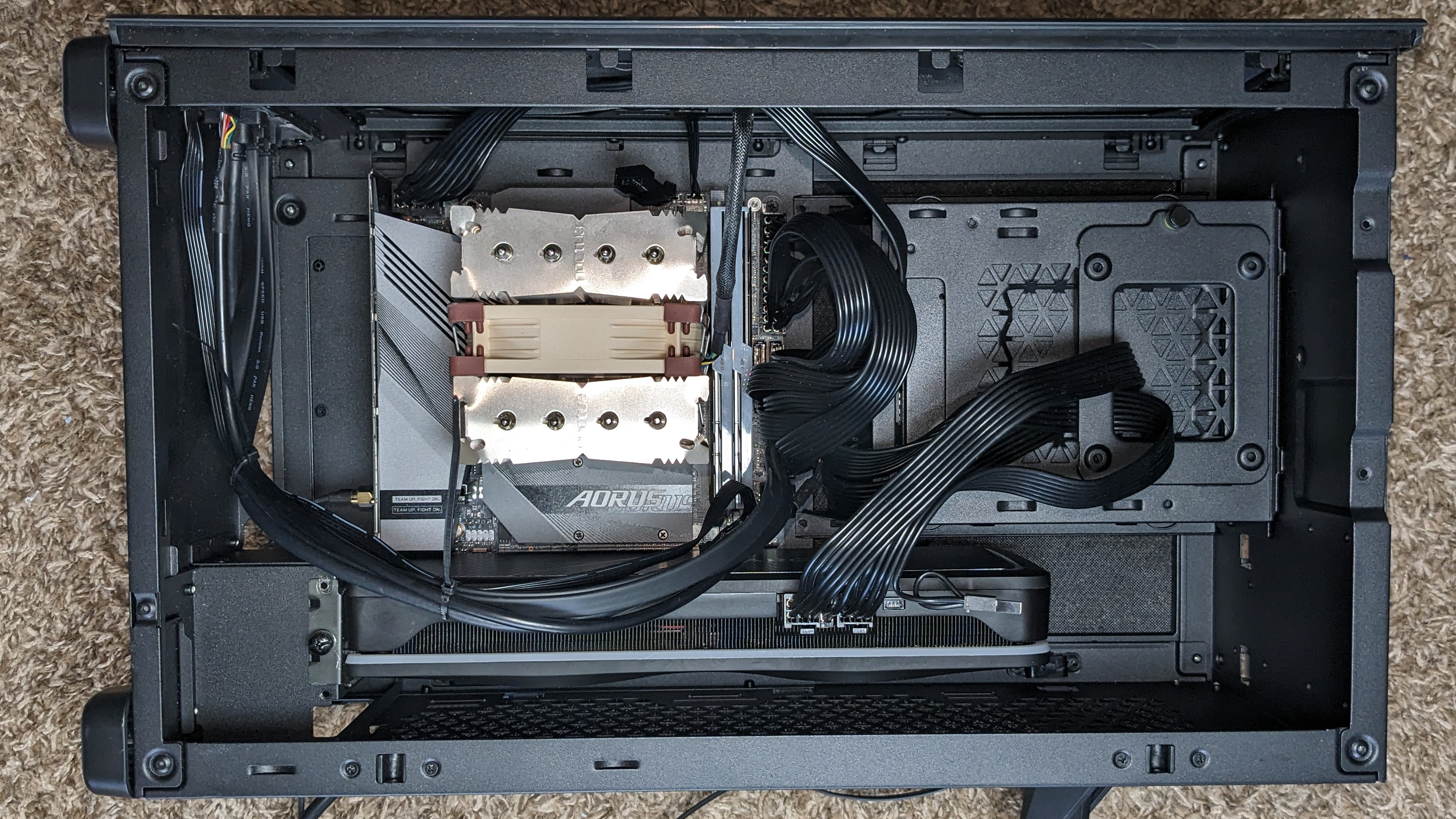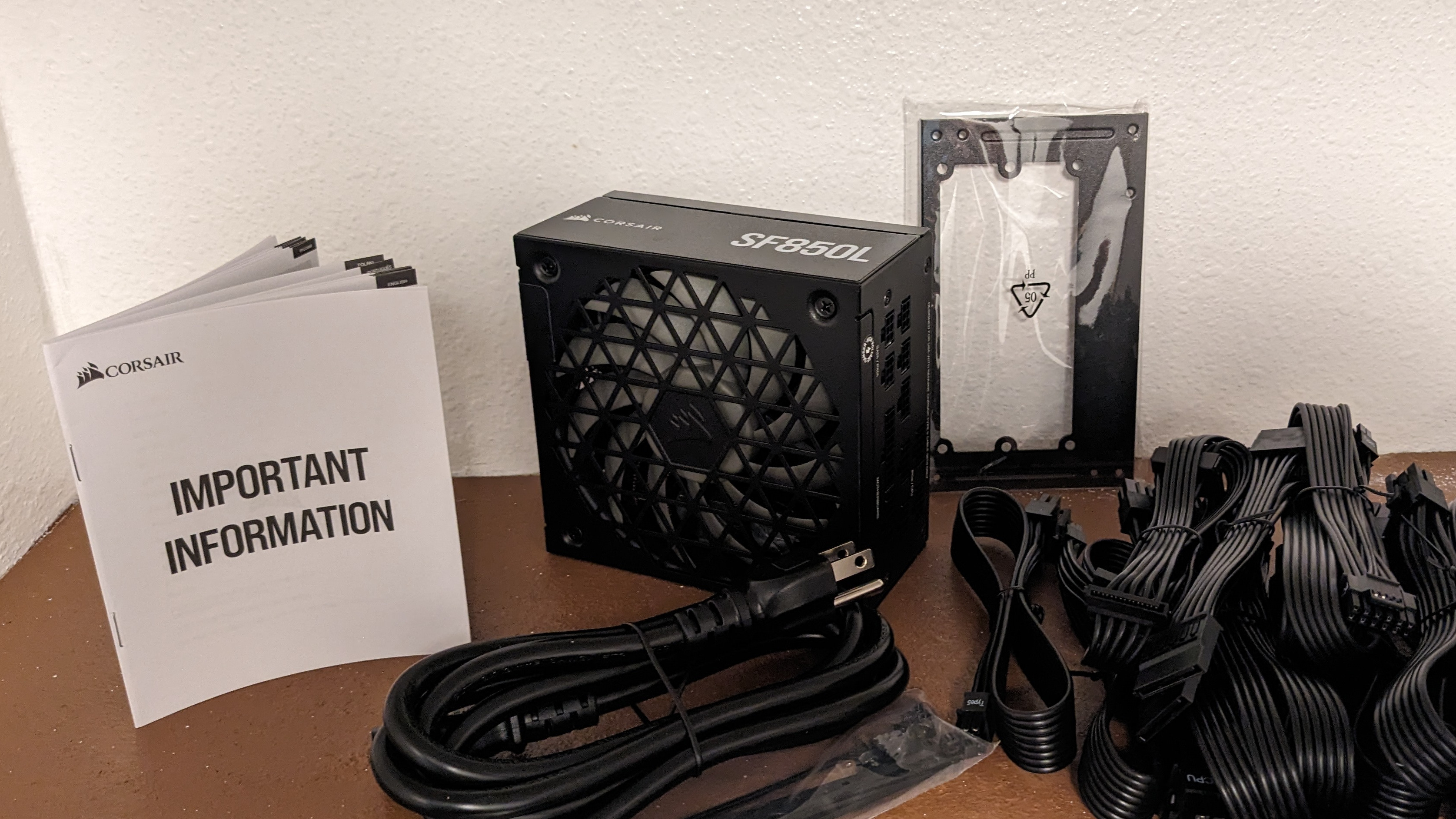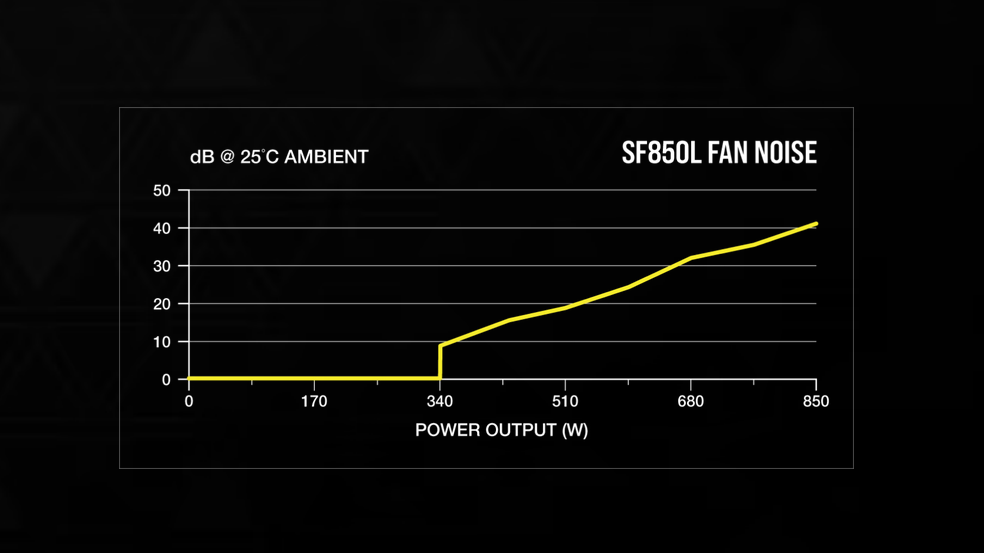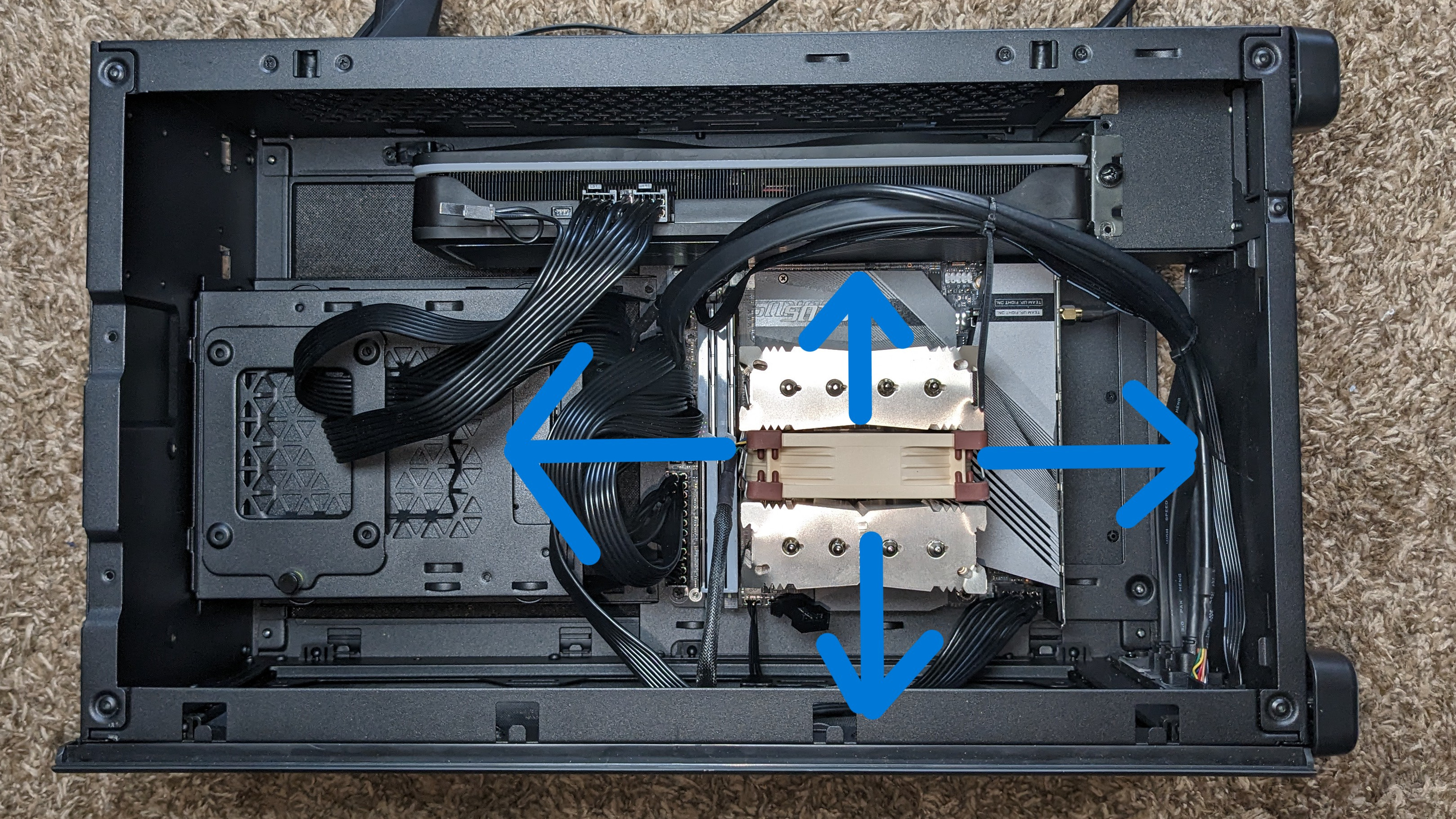Hands-On With Corsair’s 2000D Airflow: Tall SFF Case Supports 360mm AIOs
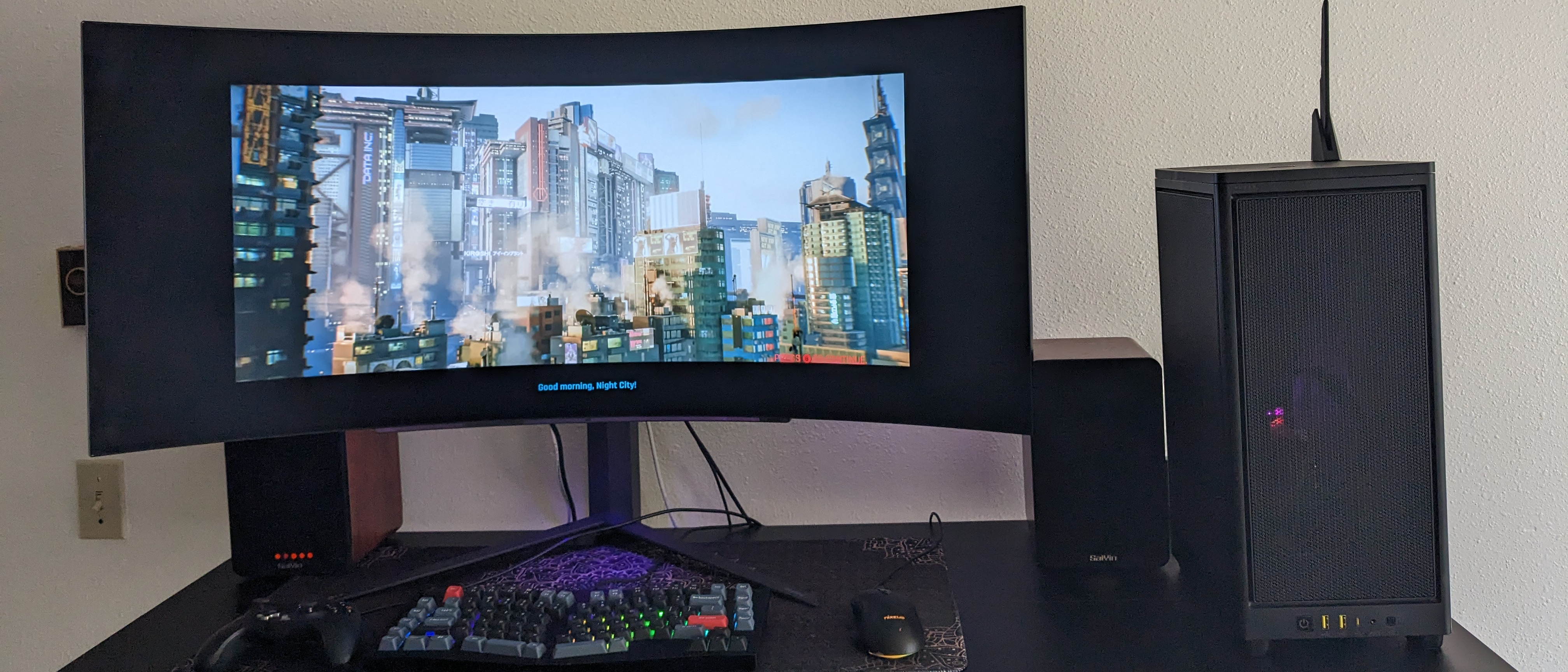
Corsair is well known in almost every corner of the component, peripheral space, and PC space, offering up cooling and power supply options like H170i Elite 420mm AIO and CX750M Power Supply, as well as monitors, mice, and even laptops. Of course, the company is also a mainstay in the PC case realm, and its latest SFF chassis, the Corsair 2000D Airflow offers some interesting features for a case with this small of a footprint.
The 2000D Airflow is a tall and slim SFF computer case that features mesh panels on all sides for maximum airflow, as well as 360mm AIO support – something that’s rare in SFF-style cases. We’ll also take a quick look at the SF850L PSU, which the company included with the case for testing purposes.
Case Specifications
| Case | Corsair 2000D Airflow |
| MSRP | $139.99 USD |
| Installed Size | 271 (L) x 200 (W) x 458mm (H) |
| Material | Steel, Plastic |
| Cooling Layout | Front: 3x 120mm*, 2x 140mm (3x AF120 RGB SLIM Included RGB Version Only) |
| *Dependent on the width of your graphics card, AF Slim Fans may be required for the front mount | |
| Side: 3x 120mm or 360mm AIO | |
| Rear: 2x 120mm or 240mm AIO | |
| Expansion Slots | 3 |
| Motherboard Support | Mini-ITX |
| Storage | 2x 2.5" SSDs (3 if you purchase a 2nd mount) |
| Clearance | PSU Length: 130mm |
| CPU Cooler Height: 90mm | |
| GPU Length: 365mm | |
| Front I/O | 2x USB 3.0 Type-A, 1x USB 3.1 Type C, 1x 3.5mm Headset Jack, PWR Button, Reset Button |
| Color Options | Black, White |
| Warranty | 2 Years |
Features of Corsair’s 2000D Airflow
• SFX PSU Support
As is common with compact cases, the 2000D Airflow doesn’t support full-size PSUs, so you’ll need an SFX PSU in order to use this case. The power supply mounts onto an included bracket, which can be removed from the case to facilitate easier installation.
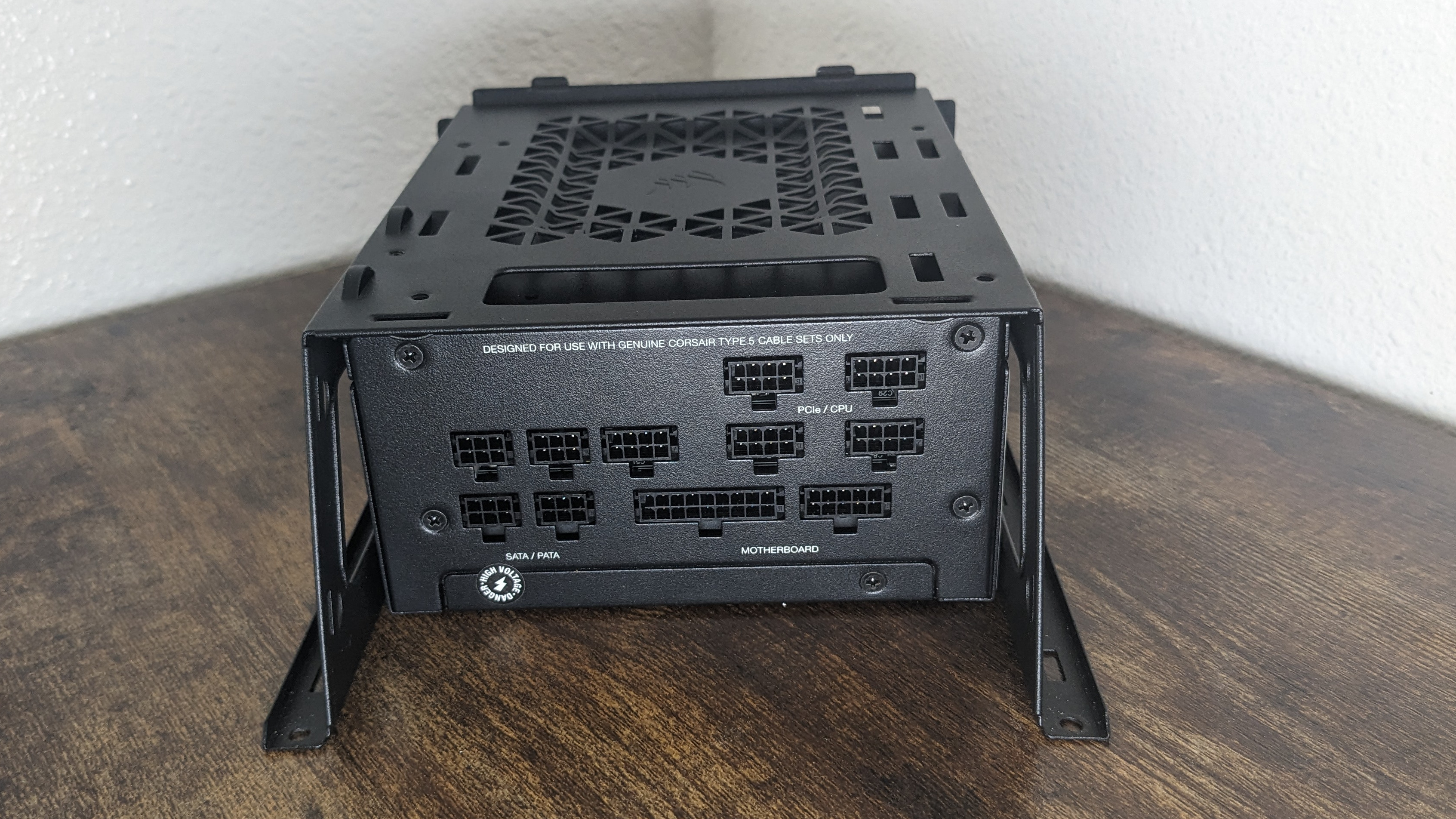

• Low profile AC Power Cable
Due to the unique position of the power supply in the 2000D Airflow (it sits vertically up at the top of the case), Corsair includes a low-profile AC Power cable adapter and velcro ties along the path of the cable. This allows for an unobstructed and organized look, although it would look better if the case was designed to route the cable on the inside of the chassis.


• Fits up to three 2.5-inch storage drives
Get Tom's Hardware's best news and in-depth reviews, straight to your inbox.
To accommodate plenty of storage, Corsair’s 2000D airflow supports up to three 2.5-inch storage drives. But only two drives can be used out of the box. There are two locations you can install drives on – at the very top of the case there are holes for one SSD, and there is an included 2.5-inch mount that attaches to the top of the PSU bracket. The PSU mount supports two of these brackets, but only includes one. So if you want to install three drives you’ll need to purchase another (separately) if you wish to use three 2.5-inch drives. I’ll touch on this subject again later.
• Three-slot GPU support
Support for GPUs of up to three slot slots thick (and 14.37 inches long) means most of today’s best GPUs, including Nvidia’s RTX 4090 and AMD’s 7900XTX should fit here – so long as you don’t choose the largest of those models available.
• Mesh on all sides for superb airflow
Each side panel included with the 2000D Airflow features a mesh design to allow for maximum airflow. And eachl panel can be removed, so you can easily access the interior to replace components.
• 360mm AIO Support
Many cases designed for Mini-ITX motherboards are limited to 240mm AIO or air cooling support, but Corsair’s 2000D Airflow supports full size 360mm AIOs (up to 400mm in length) for maximum cooling capacity.
• I/O connections at the bottom
The motherboard and GPU IO connections are accessible through the bottom of the base and accessed by removing the bottom cover. They are routed through a single exit, which allows for tidy cable management. Note, though, that this obviously makes plugging and unplugging cables less convenient than typical layouts.
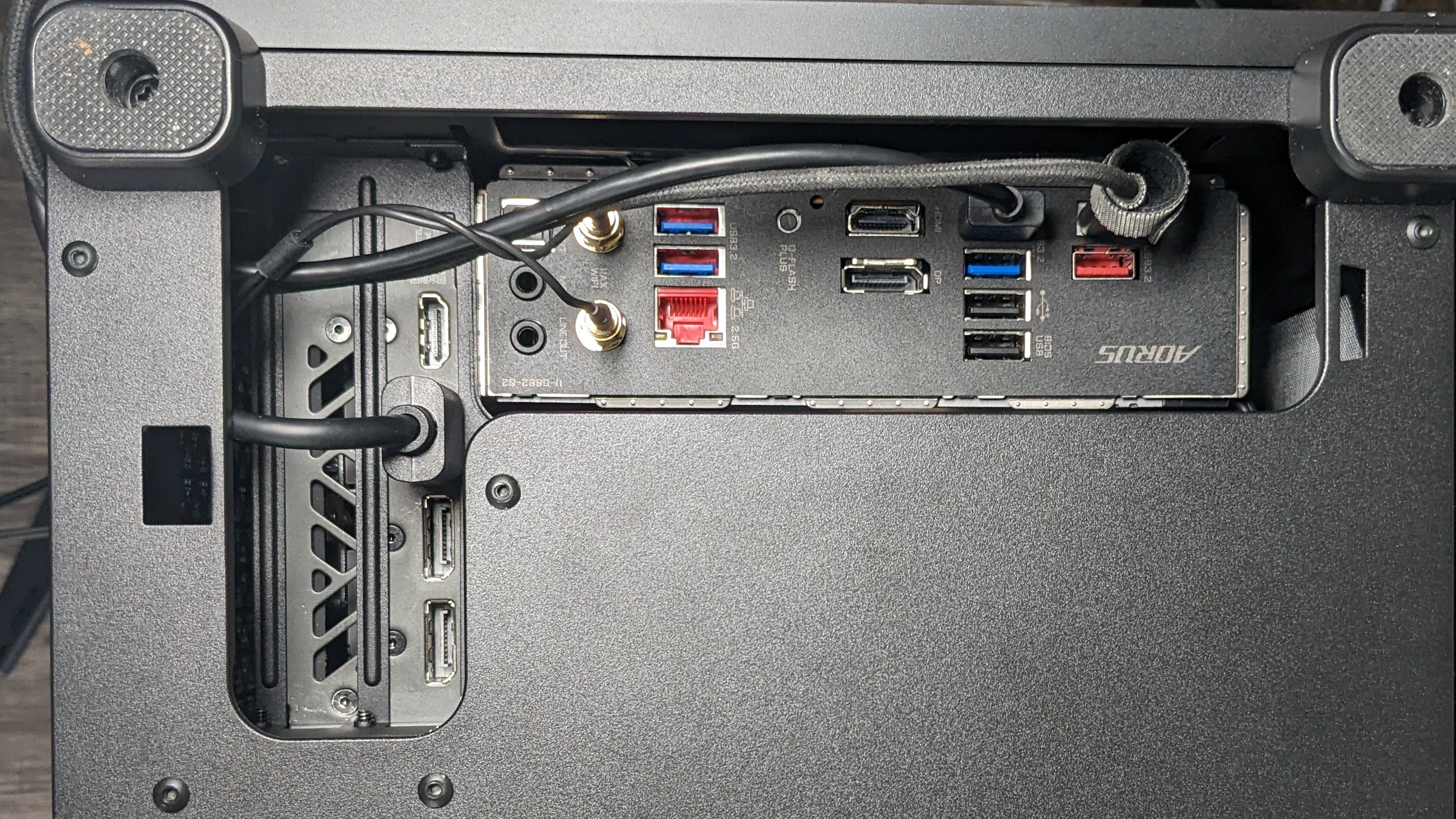
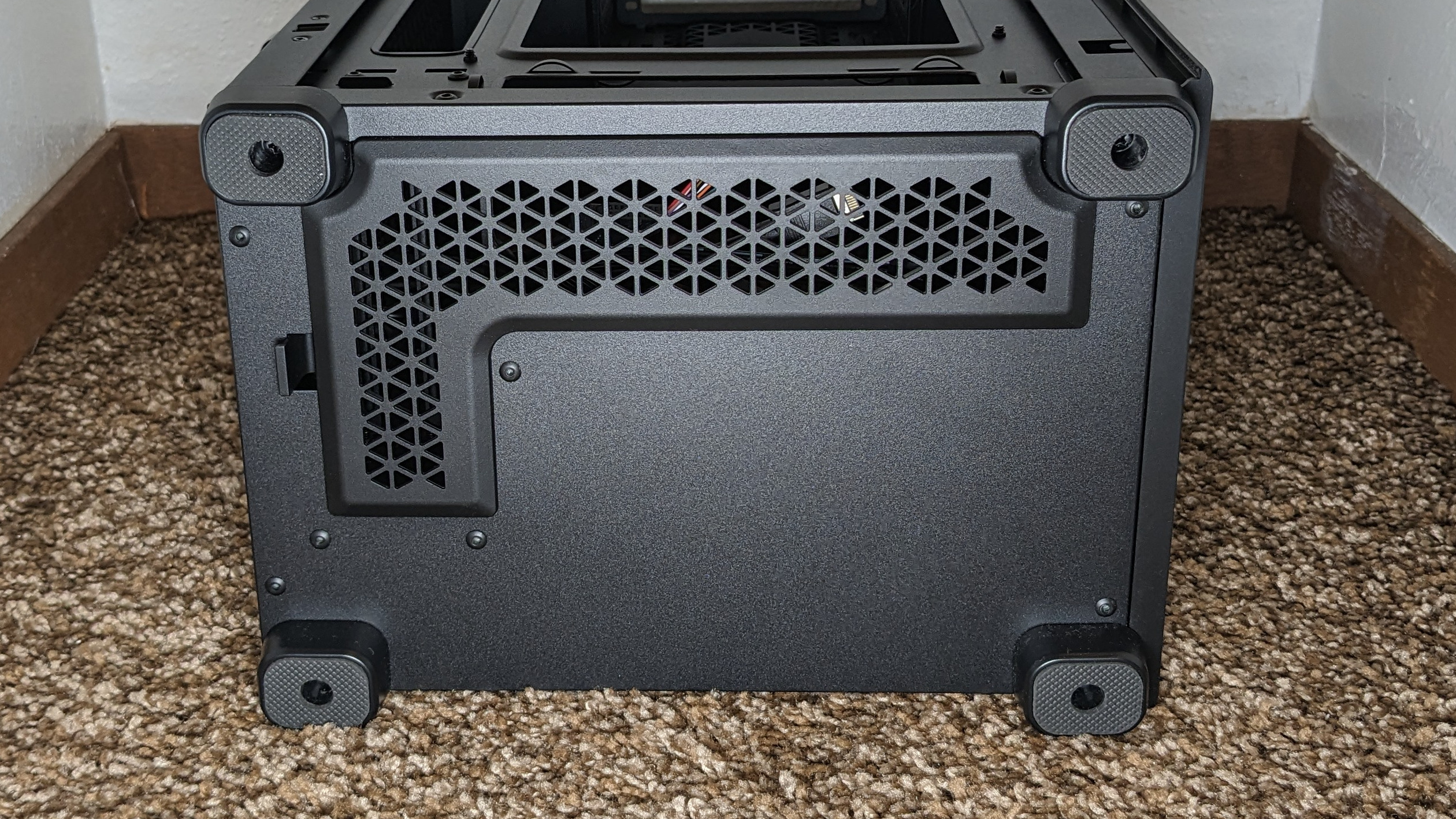
• Front I/O Panel
The front panel of the case includes Power and Reset buttons, a 3.5mm jack with audio and microphone support, two USB 3.2 Type-A connections, and one USB 3.2 Type-C connection.
SF850L Power Supply Features
Corsair included one of its newest PSUs, the SF850L, for use in testing the 2000D Airflow.
This power supply features an SFX-L form factor and is fully modular. It is ATX 3.0 and PCIe 5.0 compliant and supports the latest 12VHPWR standard for GPUs like Nvidia’s RTX 4090. The SF850L is designed for extreme operation, supporting 100% power output even in hot environments with 40C ambient temperatures (104F).
The SF850L is designed with low noise levels in mind. The cooling fan does not engage unless power consumption exceeds 340W, and even with 500W loads the noise levels are rated for a virtually silent 20dBA.
Suggestions for improvement
Corsair’s 2000D Airflow is an excellent case in a unique form factor, but there are a few things that I wish were different. There are two changes in particular I believe would make this case much more attractive.
1. Add full-size PSU Support
There’s certainly room for a full-size PSU at the top of Corsair’s 2000D Airflow, so I don’t understand why the company didn’t include mounting support for one.
2. Obtaining a third SSD mount is difficult
The 2000D Airflow supports two 2.5-inch SSDs out of the box. In order to install a third SSD (without resorting to something questionable like double-sided tape) you’ll need to obtain an additional mounting bracket. However, you can’t yet order one online from Corsair – you’ll have to file a customer support ticket instead. Alternatively, you could order a generic one for less than $10 and hope that it fits the case, but there’s no guarantee there.
3. More SSDs should be supported
While most users won’t need more than two 2.5-inch SSDs and will be satisfied with the default configuration, this case could easily support four or more out of the box. Mounting holes for an additional SSD could easily be added to the top, across from where the current top SSD mount is located.
Cooling Configurations Overview
I tested Noctua’s NH-D9L Air cooler in this case to get an idea of what air cooling configurations will be best for Corsair’s 2000D Airflow. For testing, I used Intel’s i9-13900K with Gigabyte’s B660i Aorus Pro DDR4 motherboard and Intel’s ARC A770 LE 16GB GPU.
Normally you would orient an air cooler toward the back of the case, but if you do that with Corsair’s 2000D Airflow what happens is that all of the hot air hits the GPU, thus raising it’s temperature. Even with fans installed at the front of the case, this isn’t ideal. Pushing air down to the bottom of the case avoids baking the GPU, but results in worse CPU temperatures.
Pushing the air up provides better CPU temperatures and doesn’t heat the GPU, but the most effective air cooling configuration is to have the cooler oriented so that the fan exhausts through the front of the case. You’ll still want to have two or three case fans on the front, pulling air from the case and exhausting it forward for best performance. There will be some performance loss if you decline to install case fans, especially on weaker air coolers designed for lower TDPs.
The most ideal configuration of this case is to use liquid cooling with the fans pushing the air through the radiator directly outside of the case. This configuration allows for maximum performance and eliminates the need for case fans. Since all sides of the case are mesh, the fans of the AIO and GPU are sufficient to provide airflow over the motherboard - reducing overall system noise levels.
Conclusion
Corsair’s 2000D Airflow is a unique SFF case that supports full size, three-slot GPUs such as Nvidia’s RTX 4090. It also supports side-mounted installation of full-size 360mm AIO liquid coolers. These two factors combined make this one of the few SFF-style cases capable of cooling the most thermally demanding consumer CPUs and GPUs.
The tall, square form factor allows it to fit into a wide variety of environments. I particularly liked that you don’t need additional case fans when liquid cooling is used for the CPU. This enabled exceptionally low system noise levels, which will appeal to those who prefer silent operation.
Corsair’s 2000D Airflow is available today for $139.99 in the configuration we tested. An RGB version that includes three 120mm front fans and an RGB hub is available for $199.99.
MORE: Best PC Cases
MORE: Best Mini-ITX Cases

Albert Thomas is a contributor for Tom’s Hardware, primarily covering CPU cooling reviews.
